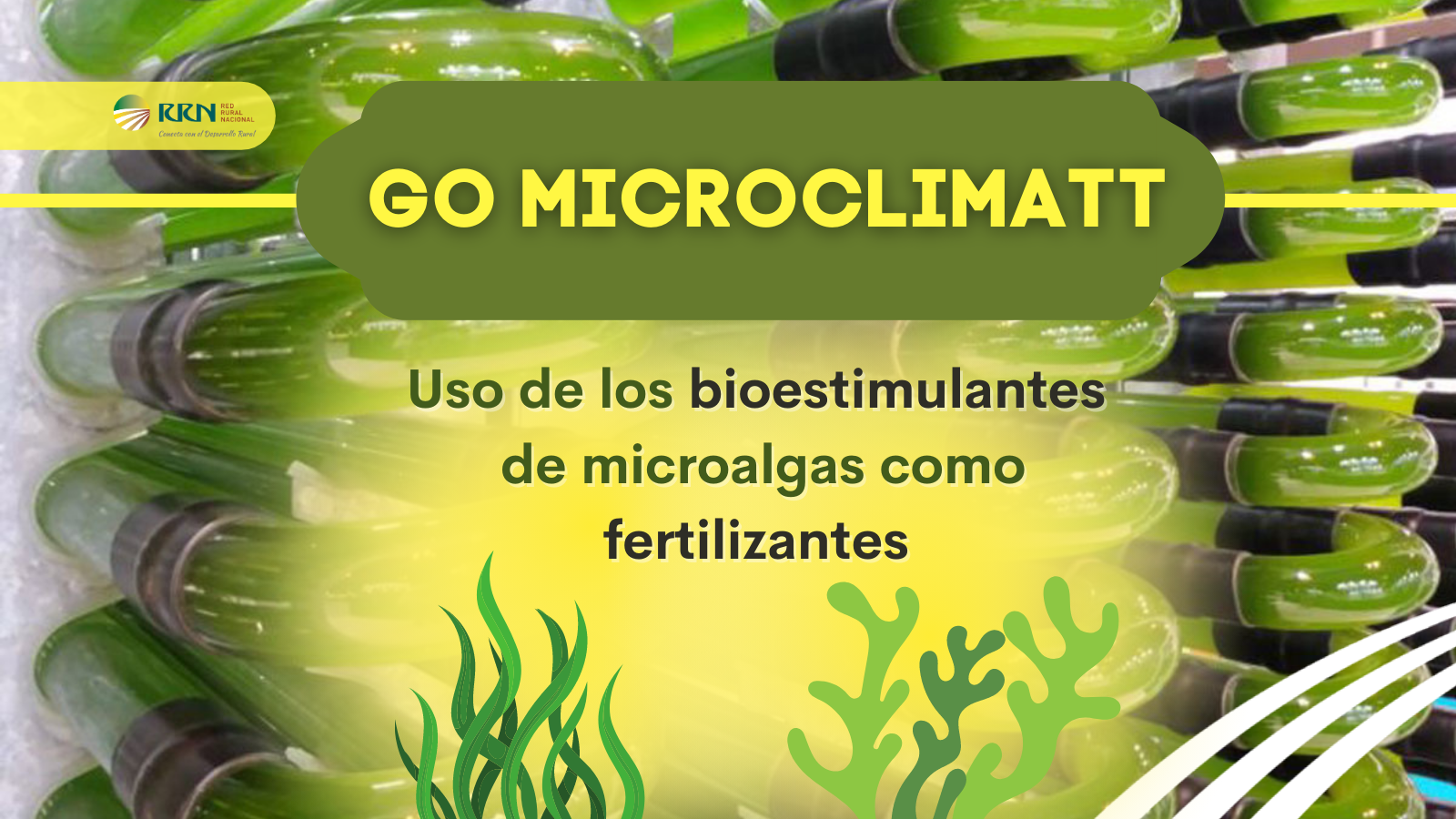
27 de February de 2023
Innovación
The use of biostimulants is an alternative to reducing fertilizer use when trying to improve crop productivity, making them an important resource on the path toward more sustainable, profitable, and environmentally friendly agriculture.
- The study of two biostimulants composed of microalgae has led to a better understanding of their mechanisms of action.
- Their use has been shown to improve the health and profitability of wheat and tomato crops.
The use of biostimulants is an alternative to reducing the use of fertilizers when trying to improve crop productivity , making them an important resource on the path to more sustainable and profitable agriculture. and environmentally friendly.
These biostimulants can be microorganisms and various substances such as humic and fulmic acids, natural antioxidants, or amino acids. Among them, seaweed is a source with much to explore, something that the Microclimatt Operational Group ( GO Microclimatt ) has been doing since 2020 in the provinces of Madrid, Murcia, Segovia, and Seville. This group defends the fundamental role of agricultural biostimulants, but particularly those derived from microalgae biomass .
On February 23, the group presented its final results , after a start in which it set the following objectives:
- To evaluate the improvement in water stress resistance and nutrient utilization efficiency in tomato and wheat treated with biostimulants.
- Quantify the incorporation of carbon into the plant biomass of crops linked to increased productivity.
- Evaluate the increase in organic carbon incorporation into the “soil sink.”
- Verify the improvement in soil fertility with crops treated with microalgae.
- Improve soil quality, functionality and sustainability.
In short, the aim is to demonstrate the effectiveness of biostimulants through demonstrative tests (phenotypic, physiological and transcriptomic).
Final results
The Operational Group presented its final results a month before its completion in March at a seminar attended by the National Rural Network ( RRN ). According to its leaders, the application process has been carried out on both plants and soil, and has largely met the main objectives .
Thus, they have worked with two microalgae-based biostimulants, one called B1 and the other B2. Thanks to their work over the years, their effects on wheat and tomato crops have been rigorously characterized, and it is evident that the use of these biostimulants promotes resistance to water stress and nutrient utilization efficiency. Furthermore, they generate additional carbon incorporation into the soil "sink," as well as improving soil fertility and acting at the molecular level.
But, above all, research has allowed us to understand the mechanisms by which biostimulants act on plants and soils, and their activity at the molecular level, from gene to harvest.
There are thus positive effects on the harvest in terms of nutrients and overall quality, and the response to drought and irrigation has been improved. The data show how, for example, untreated wheat in one of the study areas yielded 1,562.5 kg per hectare, while treatment with B1 increased this to 1,860 kg. This resulted in the capture of approximately 594 kg of carbon dioxide per hectare in the B1-treated wheat crop.
Components and financing
The GO Microclimatt is made up of the company AlgaEnergy , the Center for Soil Science and Applied Biology of Segura ( CEBAS ), the Madrid Institute for Rural, Agricultural and Food Research and Development ( iMiDRA ), the Institute of Plant Biochemistry and Photosynthesis ( IBVF ), the Agrarian Association of Young Farmers ( ASAJA ) and the Technological Platform of Plant Biotechnology ( Biovegen ).
The Operational Group has received a total investment of €557,816.49. It is 80% co-financed by the European Union through the EAFRD fund and the remaining 20% by the Ministry of Agriculture, Fisheries and Food . The aid was implemented through the managing authority, in this case the Directorate General for Rural Development, Innovation and Agri-Food Training ( DGDRIFA ).









